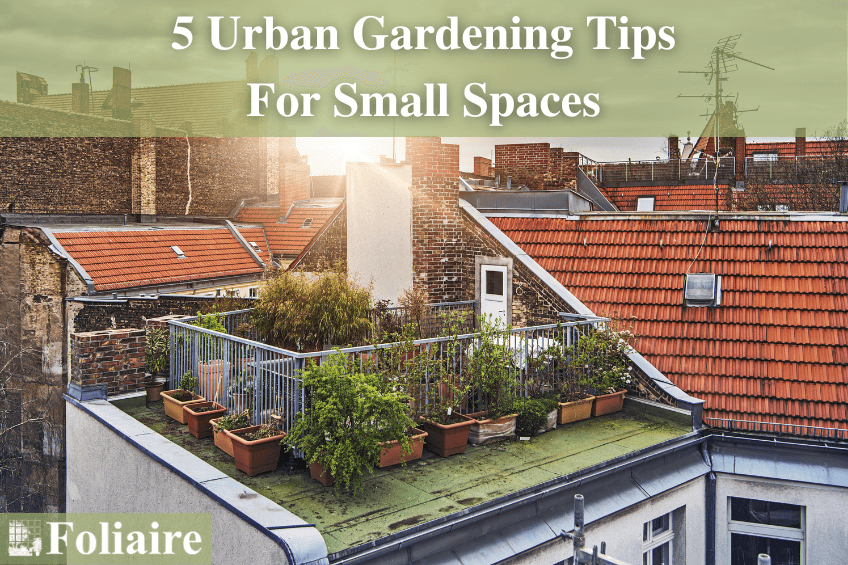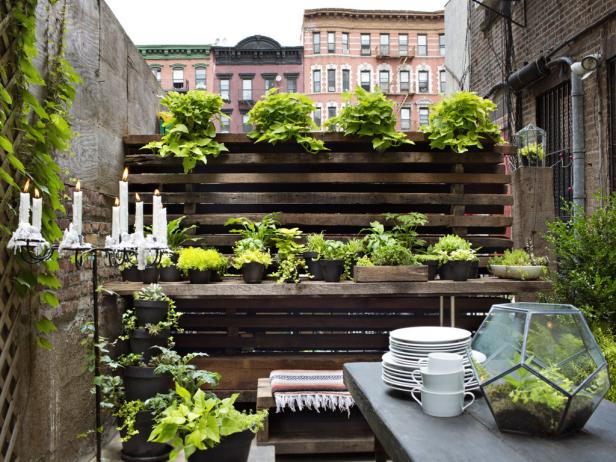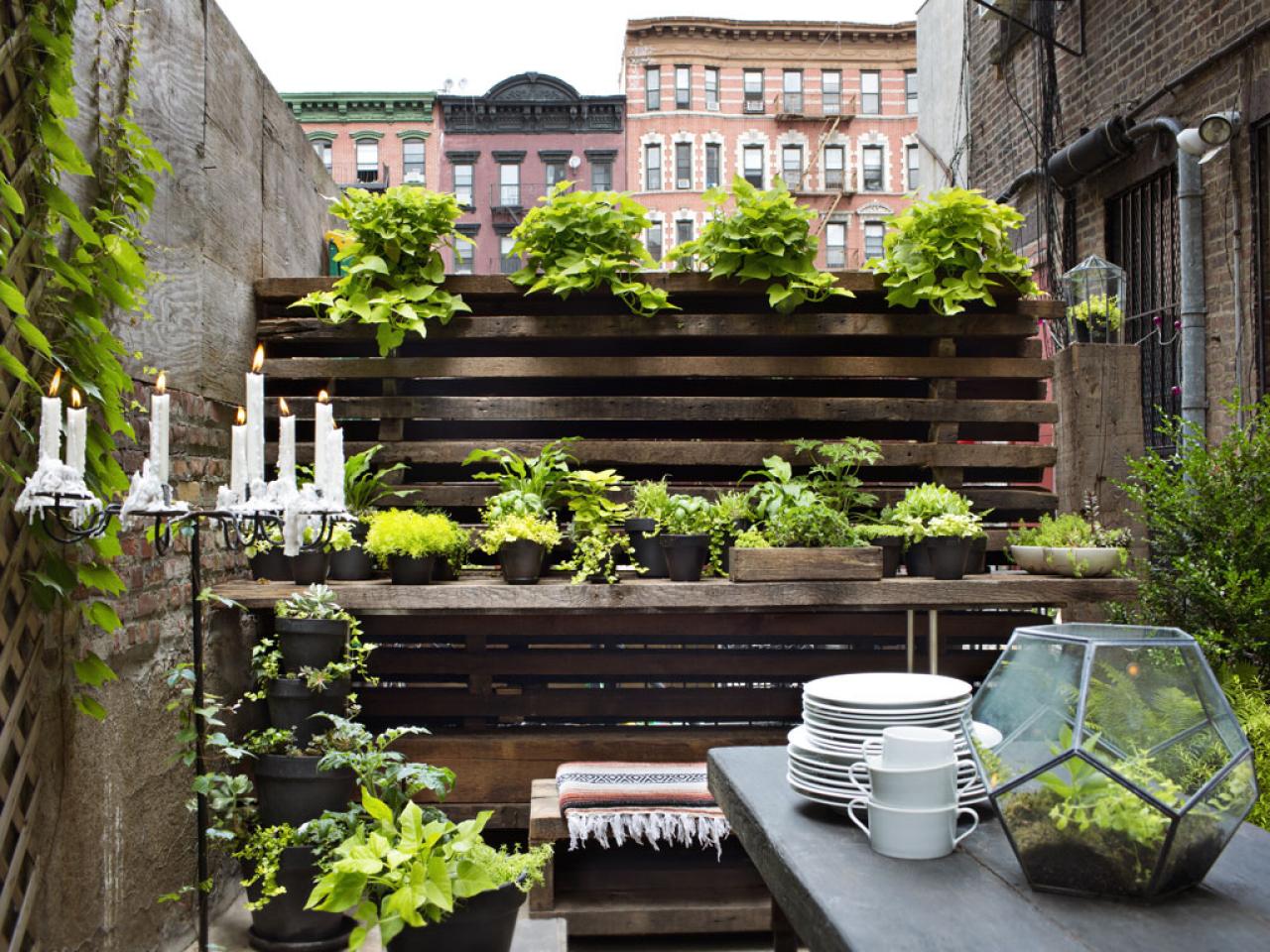Urban gardening in small spaces requires creativity and efficiency. Utilize vertical planters and choose compact varieties for maximum yield.
As city dwellers increasingly seek the serenity of nature, urban gardening has become a flourishing trend. Transforming your balcony, rooftop, or even a sunny windowsill into a green oasis not only beautifies your space but also contributes to sustainability and healthier living.
It’s an ingenious way to cultivate herbs, vegetables, and flowers within the confines of a metropolis. Adapting gardening practices to small areas calls for strategic planning and resourceful use of space to create a lush, productive garden. Whether you have a tiny patio or just a few planters, the benefits of growing your own plants are immense, from enhancing air quality to providing fresh produce. With the right approach, even the smallest urban nook can become a verdant retreat that fosters relaxation and a connection to the environment.
Introduction To Urban Gardening In Small Spaces
Urban gardening transforms small city spaces into green havens. Spaces like balconies and rooftops can grow fresh vegetables and flowers. Gardeners find creative ways to use whatever space they have.
- Maximizing vertical space is key in small areas.
- Planters can hang on walls or railings.
- Window boxes add charm and growing space.
Gardening in urban settings offers many benefits. It improves air quality and adds beauty to the concrete landscape. It also provides stress relief and a sense of achievement. People enjoy growing their own healthy food.
Yet, small spaces bring challenges for gardeners. They must choose plants carefully. Not all plants suit limited growth areas. A plant’s adult size and light needs are important considerations.
Maximizing Your Gardening Space
Urban gardening transforms small spaces into green havens. Vertical gardening becomes a key strategy, utilizing walls and fences to grow upwards. Install shelves or use hanging baskets to maximize vertical surfaces. Climbing plants are perfect for this purpose.
For those with balconies or windowsills, containers and window boxes can host a variety of plants. Choose pots that fit snugly in available spaces. They can bring life to these compact areas with ease. Always check for sufficient sunlight.
Multifunctional furniture doubles as planters, saving precious room. Opt for benches with built-in planters or tables that accommodate greenery beneath. These creative solutions blend utility with the pleasure of gardening. They ensure every inch serves a purpose.
Choosing The Right Plants For Urban Spaces
Choosing plants for small urban gardens needs special care. Herbs like basil and mint grow well in limited spaces and they love sun. Succulents require little water, making them easy to maintain in tiny spots.
Veggie lovers can enjoy cherry tomatoes and strawberries which thrive upwards, using vertical space. Light is vital; most plants need 6-8 hours of sunlight daily. If your area lacks light, pick shade-tolerant plants like ferns.
Season-wise, spring bulbs and annuals adorn summer. In autumn, choose ornamental kale or chrysanthemums. Evergreens keep your balcony green in winter. Think about your space’s size and light before you pick your green friends.
Soil And Fertilizer Best Practices
Different plants need different types of soil. Clay, sand, and silt are common. Some soils drain water fast, others hold moisture. A good mix is often best for urban gardens.
Choosing between organic and synthetic fertilizers can shape your garden’s health. Organic options feed your plants naturally. They improve soil over time. Synthetic types give quick results but could harm the ecosystem with overuse.
For DIY composting, you need a bin and kitchen scraps, like fruit and vegetable peelings. Mix in dry leaves or straw. Turn the pile every few weeks. This creates rich soil to help your city garden thrive.
Innovative Watering Techniques
Urban gardening thrives with clever use of space and resources. Small spaces benefit from innovative watering techniques. Self-watering systems ensure plants get sufficient moisture. These systems utilize containers that hold water, which plants absorb through their roots. It’s a set-and-forget method, perfect for busy gardeners.
Drip irrigation targets the roots directly and minimizes evaporation. This setup involves small tubes providing water to each plant. It’s ideal for small gardens, delivering water slowly, right where needed.
| Tip | Benefit |
|---|---|
| Use mulch | Keeps soil moist longer |
| Water in the morning | Reduces evaporation |
| Install rain barrels | Collects rainwater for reuse |
Water conservation is key in urban gardening. Collecting rainwater and using it for your garden saves a lot. Pair this with the right soil and mulch, which keep the water for longer periods. This guarantees your garden is eco-friendly and efficient.

Credit: www.pinterest.com
Designing Your Urban Garden
Designing your urban garden requires smart planning. Start by measuring your space. Sketch a layout on paper. Utilize vertical space for more greenery. Pick foldable furniture to save room.
For color and texture combinations, choose plants with varied hues. Pair smooth, glossy leaves with fluffy, matte ferns. This creates a visually pleasing contrast. Select flowers to add pops of color.
Creating an aesthetic and practical space is crucial. Mix edibles like herbs with ornamental plants. This offers both beauty and function. Include perennials for year-round interest. Balance sunlight and shade plants for health.
Pest Control And Plant Health
Urban gardening introduces you to the tiny foes of your plants. Understanding which pests are common, helps you protect your green pals. Aphids, spider mites, and whiteflies often invade small gardens.
Combat these critters using natural methods. Introduce ladybugs to feast on aphids. Mix water with a few drops of neem oil and soap to deter pests. This mixture is great for plants and safe for humans.
Keep your plants strong with regular health checks. Look for discolored leaves or weak stems. Such signs reveal your plant’s health. Prune regularly to encourage growth. Always clean your tools to stop spreading problems from plant to plant. Good care means happy plants.
Integrating Technology In Urban Gardening
Smart Gardening Gadgets revolutionize how we grow plants in tight spaces. Devices like soil sensors and automated watering systems ensure plants get exactly what they need. The click and grow smart garden lets anyone nurture fresh herbs indoors.
Utilizing Mobile Apps for Gardening Assistance brings expert help to our fingertips. Apps provide reminders for watering and tracking plant growth. They also offer personalized advice based on individual garden conditions.
| System | Description | Space Saving |
|---|---|---|
| Hydroponic Systems | Grow plants in water with nutrient solutions. | Yes |
| Aquaponic Systems | Combine fish farming with hydroponics. | Yes |
Community And Shared Urban Gardening
Community Garden Initiatives aim to transform shared spaces into green havens. Groups of people team up locally to grow plants and food in urban settings. These initiatives often provide garden plots on a membership or rental basis, opening the door for those without personal outdoor space to still get their hands dirty and enjoy gardening.
Joining a community garden enables resource sharing, from tools to watering schedules. This setup helps reduce individual costs and promotes efficient use of space. It’s a smart way to garden when your own space is tight.
Educational Opportunities and Workshops in these gardens offer invaluable lessons in gardening. They also foster community spirit and teach sustainable living practices. Weekly workshops might cover topics from composting to plant care, ensuring everyone has the chance to grow their green-thumb skills.

Credit: foliaire.com
Keeping The Harvest: Storing And Preserving
Urban gardening often results in bountiful harvests, even from the tiniest plots. Maximize the yield with proper harvesting techniques tailored for small spaces.
To keep your veggies fresh, explore various preservation methods. Quick-pickling and canning are top choices among city growers. Drying herbs is simple and requires minimal equipment.
Incorporating home-grown produce into meals is both rewarding and nutritious. Use fresh herbs to enhance flavors. Salads and stir-fries are perfect for showcasing your garden’s bounty. Enjoy the taste of your own effort!

Credit: www.hgtv.com
Frequently Asked Questions On Urban Gardening: Tips For Small Spaces
How Do You Make A Small Urban Garden?
Choose a sunny spot for your urban garden, maximizing vertical space with hanging planters. Opt for compact plant varieties and use high-quality soil. Regularly water your plants and use organic fertilizers to promote healthy growth. Utilize balcony railings for climbing plants to save space.
How Do I Maximize My Small Garden Space?
Maximize your small garden space by choosing vertical gardening, using hanging planters, and incorporating multi-functional furniture. Opt for dwarf plant varieties and practice efficient spacing and companion planting to ensure each plant has enough room to thrive. Regular maintenance is key to preserve space.
How Do I Start An Urban Garden?
Choose a suitable location with adequate sunlight. Get quality soil and select appropriate containers. Decide on plants that thrive in your climate. Invest in basic gardening tools. Begin planting with seeds or starters. Regularly water and maintain your garden for healthy growth.
Conclusion
Embracing urban gardening enriches city living, even with minimal space. Transform balconies, windowsills, or corners into green retreats using these tips. Remember to choose plants wisely, maximize vertical spaces, and nurture growth with patience. Happy gardening, and may your small-space oasis thrive!



